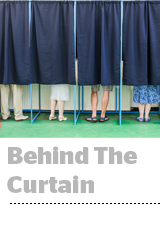 The 2016 election was a disaster for the reputations of political pollsters, many of whom missed badly. With the midterm elections now in the bag, how well did the pre-election surveys match Tuesday’s results?
The 2016 election was a disaster for the reputations of political pollsters, many of whom missed badly. With the midterm elections now in the bag, how well did the pre-election surveys match Tuesday’s results?
Pretty well, actually.
Public polls and data aggregators like FiveThirtyEight were, broadly speaking, closer to the mark in 2018 than they were in 2016, laying strong odds that Democrats would retake the House of Representatives and that Republicans would retain the Senate, as both did.
Even so, with Republicans consistently outperforming pre-election polls, there remains a systematic error – one that holds across the country and not just in one-off races.
Conservative states “clearly have a silent Trump support that pollsters have an issue with,” said Andrew Drechsler, president of the liberal data analytics company HaystaqDNA.
TX: Sen. Ted Cruz vs. Rep. Beto O’Rourke, Texas Senate
One of the most watched (and heavily polled) states this year was deep-red Texas, as Rep. Beto O’Rourke took on incumbent Sen. Ted Cruz.
The Texas Senate race, which ended in a narrow victory for Cruz, encapsulated the improvement in polling data from 2016 – and the challenges still facing political forecasting.
Pollsters did a good job capturing the groundswell of support for O’Rourke and the impact of newly registered voters, for instance, but underestimated the overall electorate. FiveThirtyEight’s model for the race was built on an expected turnout of 7.1 million, but 8.3 million Texans voted.
“People tend to think pollsters are hiding behind large margins of error like we saw this year, but really what that shows is the difficulty of predicting turnout,” said Danny Franklin, former Obama campaign pollster and partner at the liberal digital firm Bully Pulpit Interactive.
Forecasters who went out on a limb and predicted an O’Rourke victory can defend their decision. His more than four million votes would have been enough to win under most Texas turnout models.
VA: Sen. Tim Kaine vs. Corey Stewart
Conservative states have been a particular challenge for political forecasters, but a silent groundswell of Republican voters has shown up in blue states as well.
Democrat Sen. Tim Kaine handily won reelection in Virginia, but FiveThirtyEight’s expected turnout of 2.8 million was low by more than half a million voters. And Corey Stewart got about 200,000 more votes than Republican Ed Gillespie had in the Virginia gubernatorial race last year, which he lost to Ralph Northam.
FL: Rep. Ron DeSantis vs. Andrew Gillum
On a night when both parties traded wins and losses, perhaps no state was as clear-cut a success for one party as Florida, where Republicans won both gubernatorial and Senate races.
Andrew Gillum, the former mayor of Tallahassee running to be the first black governor of the state, was up by more than 3 points in aggregate polling before the race, and lost by 0.6%.
FiveThirtyEight’s Florida turnout model of 7.1 million was off by more than a million votes. Gillum was expected to attract new voters, especially for a midterm cycle, but again Democrats got the votes they thought would be enough and were foiled by unexpectedly high Republican turnout.
Polling data has improved since 2016 and pollsters nailed some states that trended more liberal this cycle, like Wisconsin and Nevada, Drechsler said. “But lots (of pollsters) are going back to the drawing board this morning to figure out how to really measure that Trump support.”
This post was syndicated from Ad Exchanger.


More Stories
Revolving Door Roundup: Catherine Rampell Joins MSNBC’s The Weekend
Michael Wolff Claims to Have Been Banned From News Networks Over Latest Trump Book
WKYC News Director Jonathan Adkins Leaving the Cleveland Station